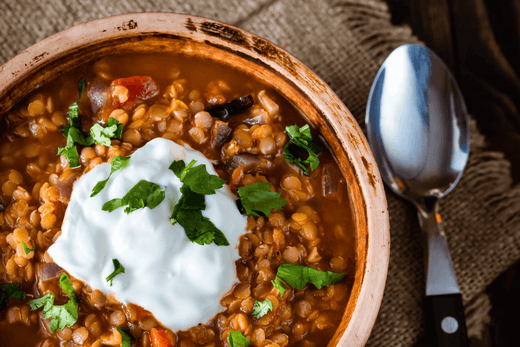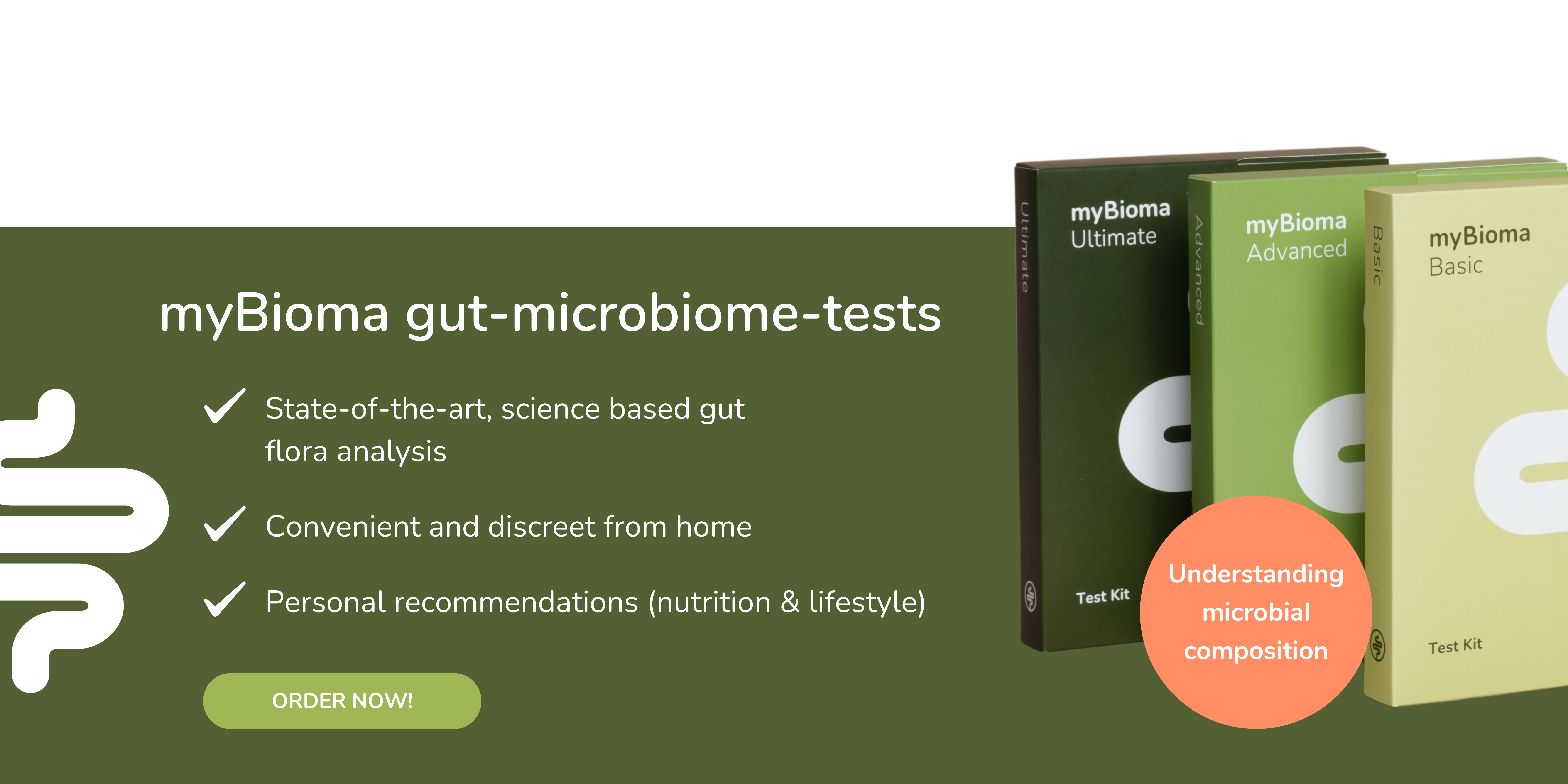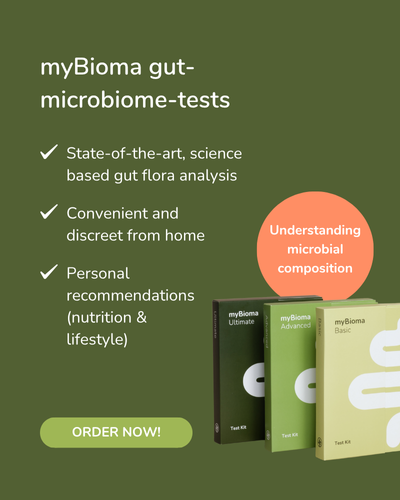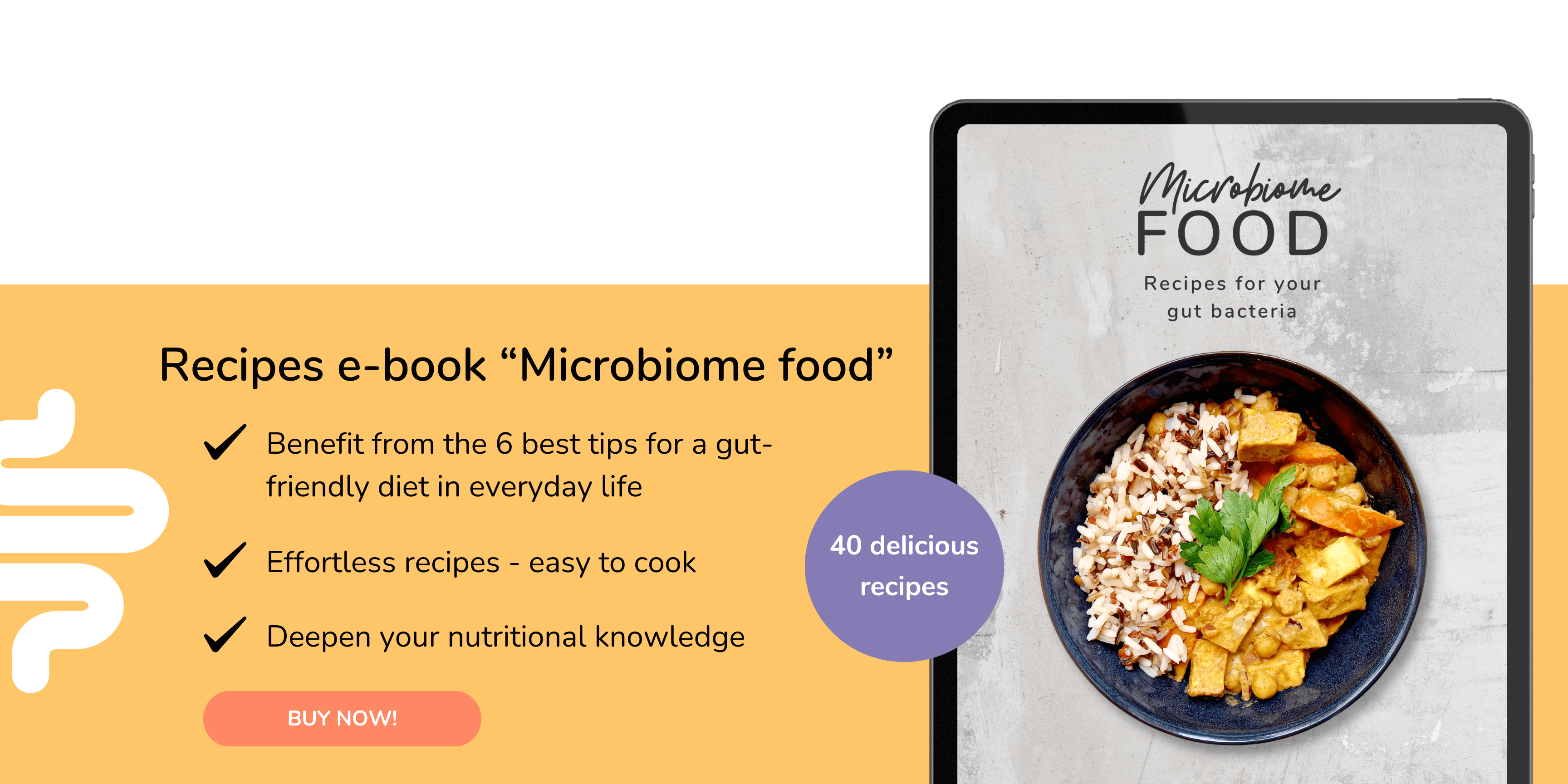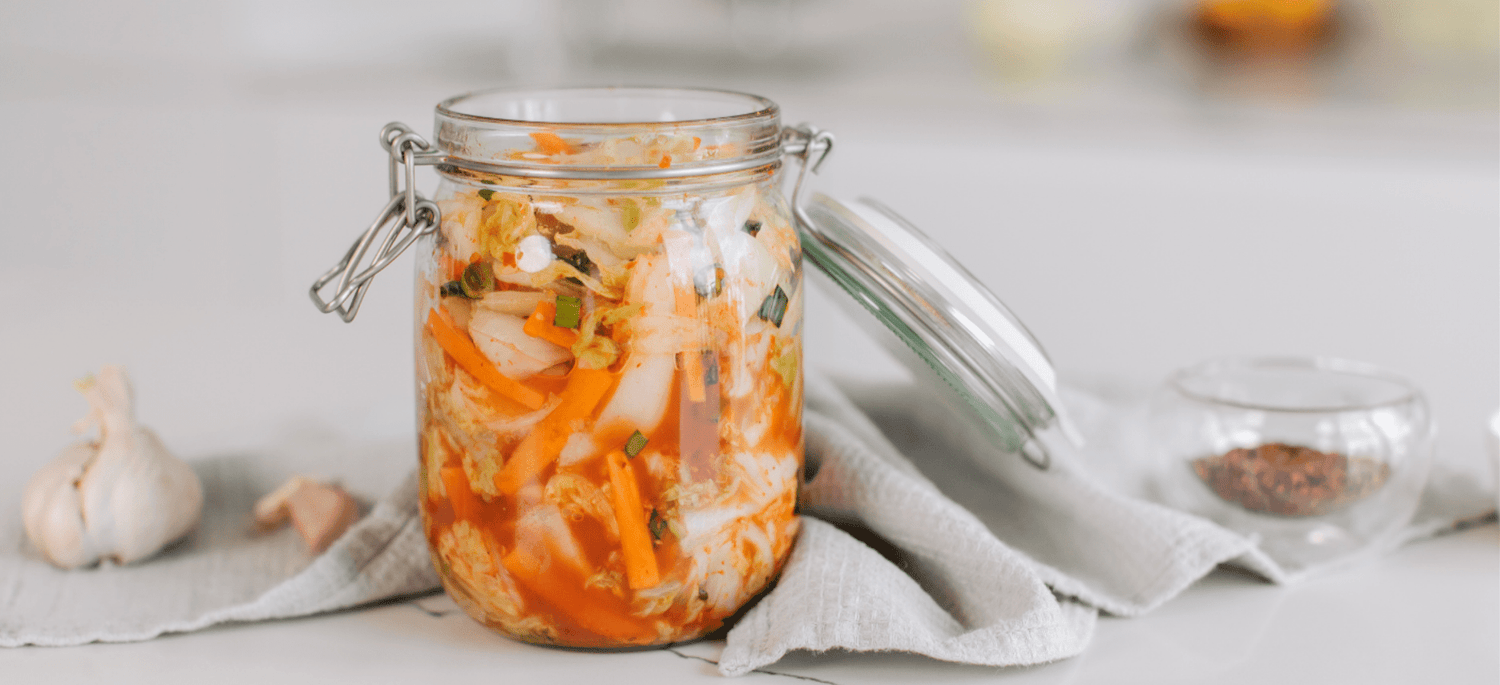Table of contents
- Feed the slimming bacteria with the right foods
- Lentil and vegetable stew
- Lentils – a cheap superfood
- Why you should let your stew cool down and reheat it
- Here's what you can do to relieve bloating
- What the other ingredients can do
- Let's get to the recipe: Vegetable and lentil stew - here's how to do it!
Feed the slimming bacteria with the right foods
It's not just hormones and the ratio of calorie intake and exercise that determine the success of our dream figure - the bacteria in your intestines also play their part . Your intestinal microbiome determines how the food you eat is utilized by your body. There are bacteria that we would rather call “fattening bacteria” like that Firmicutes , and which we call “slimming bacteria”, like that Bacteroidetes describe. However, a healthy intestinal flora is not characterized by an “either/or” of these bacteria. It is more important to have as high a variety of bacteria as possible, which live flexibly in a natural rhythm.
You can find out more about the connection between weight and the intestinal microbiome in our Blog article: Obesity – is the cause in the microbiome? read up .
So that we can start the new year fit, we have come up with one Microbiome recipe picked out to be yours To feed slimming bacteria . We want to make it very clear once again: We do not recommend “short-term diets”, but one permanent changes in diet and lifestyle. We always share recipes for you and your microbiome. Also the nutritional recommendations you get from the myBioma microbiome analysis are intended to be permanently integrated into your daily menu.
The lentil and vegetable stew is easy to prepare, very healthy, vegan and, above all, delicious. The best: You can prepare a larger portion of it straight away, because when cooled and reheated it not only tastes even tastier, it also has a very special effect on your microbiome - more on that later.
Lentil and vegetable stew
A warm, warming stew is ideal, especially in this uncomfortable time of year. Lentils are also an absolute power food for your intestinal microbiome. They contain many vitamins, minerals and are a healthy plant-based source of protein. Let's take a closer look at the benefits for your health, especially for your gut microbiome:
Lentils – a cheap superfood
The brilliant thing about lentils is that, despite containing carbohydrates, they have a very moderate effect on blood sugar levels. And not only that: this positive effect works not only within the meal in which they are eaten, but also in the following meal, even if there is an entire night in between (1). This effect is also called “Second meal effect” known, which means that in this case lentils, with their low glycemic index (GI) (i.e. a small influence on blood sugar levels after consumption), also have a blood sugar-regulating effect on the following meal (2).
Why you should let your stew cool down and reheat it
When we cook starchy plant fibers (such as potatoes, legumes, rice, etc.) and let them cool down again, so-called resistant starch. This starch cannot be broken down by the enzymes in the small intestine and so ends up in the large intestine, where it is food for the intestinal bacteria there - especially ours “Slimming bacteria”, the Bacteroidetes, are happy about this food. So as already mentioned above: It's worth cooking a larger portion! (3,4)
But even fresh, the stew is great for the good bacteria in your microbiome. The preferred food of Bacteroidetes is anyway Vegetables, fruits, nuts and legumes . So try to incorporate more of it into your daily diet. The German Nutrition Society recommends at least 30 g of fiber per day. These are, for example, 3 slices of whole grain bread, 3 potatoes, 1 apple or 2 carrots (5.6). If you'd like to learn more about dietary fibre, this blog post might be of interest to you: Dietary fibre: health benefits and tips for a fibre-rich diet
Here's what you can do to relieve bloating
If you have difficulty digesting legumes and are prone to flatulence, The spice Cumin (cumin) can be helpful: The cuminaldehydes contained in cumin support the formation of digestive juices, such as saliva, gastric juice, bile secretion and pancreas, which has a positive effect on your digestive processes and can therefore improve them. Cuminaldehydes primarily relieve flatulence. Fiber, such as legumes, becomes easier to digest with the addition of cumin. (7)
What the other ingredients can do
Garlic
Garlic is a prebiotic food and promotes our immune system and also ensures the Build up of beneficial bacteria in the intestines. Garlic has proven benefits antibiotic, antiviral and anti-inflammatory properties with it, abdominal pain can also be reduced (8,9,10,11)

Garlic promotes the immune system and ensures the development of useful intestinal bacteria
Apple Cider Vinegar
Due to the fermentation process, apple cider vinegar contains Lactic acid bacteria . (12)
olive oil
The omega-3 fatty acids it contains promote positive intestinal bacteria . (13, 14, 15, 16)
Onion
Onions are a prebiotic food and supported the good intestinal bacteria, such as Bacteroidetes in their growth. (17)

Onions support the growth of slimming bacteria
Let's get to the recipe: Vegetable and lentil stew - here's how to do it!
The ingredients
-
1 onion
-
1 clove of garlic
-
2 carrots
-
2 stalks of celery
-
2 small red peppers
-
2 potatoes (250 g)
-
2 tbsp tomato paste
-
180 g Puy lentils/green lentils
-
1 bay leaf
-
sea-salt
-
black pepper from the mill
-
1 tbsp apple cider vinegar
-
Parsley
-
(Coconut) yogurt
preparation
Peel onion and garlic and chop finely. Also peel the carrots and potatoes and cut them into cubes. Roughly chop the celery and pepper.
Fry onions, garlic and vegetables in olive oil for 5 minutes. Add the tomato paste and sauté for 1-2 minutes. Add the lentils, bay leaf and approx. 750 ml of water and bring to the boil. Simmer over medium heat for 30-40 minutes or until the lentils are soft and the stew is thick. If necessary, add water or vegetable broth.
Finely chop the parsley and season with salt, pepper and vinegar. Arrange in bowls and if you like, add a dollop of (coconut) yoghurt.
Cook the recipe and link us!
By the way, the original recipe comes from @klaraslife and is on the blog “ klaras life – vegetarian & vegan recipes ” to find.
If you make the recipe and post it on social media, we would be happy to hear from you @mybioma and the hashtag #mybiomacooks .
So now have fun cooking and feeding your slimming bacteria!

You can also find even more simple and tasty recipes to optimally support your microbiome in the myBioma eBook: Microbiome food - recipes for your slimming bacteria .
References
- Wolever, T.M., Jenkins, D.J., Ocana, A.M., Rao, V.A. & Collier, G.R. (1988). Second-meal-effect: low-glycemic-index foods eaten at dinner improve subsequent breakfast glycemic response. Am J Clan Nutr, 48(4), 1041-1047)
- Fletcher, J.A., Perfield, J.W., Thyfault, J.P. & Rector, R.S. (2012). The second meal effect and it’s Influence on Glycemia. J Nutr Disorders Ther, 2, 2018.
- Vital M et al. Metagenomic Insights into the Degradation of Resistant Starch by Human Gut Microbiota. Appl Environ Microbiol. 84(23) (2018).
- Maier TV, et al. Impact of Dietary Resistant Starch on the Human Gut Microbiome, Metaproteome, and Metabolome. American Soc. Microbiology mBio 8:e01343-17 (2017).
- Filippis F, et al. High-level adherence to a Mediterranean diet beneficially impacts the gut microbiota and associated metabolome. Gut 65, 1812 (2016).
- Tillisch K, et al. Consumption of Fermented Milk Product With Probiotic Modulates Brain Activity. Gastroenterology. 144(7):10.1053/j.gastro.2013.02.043 (2013).
- Menni C, Omega-3 fatty acids correlate with gut microbiome diversity and production of N-carbamylglutamate in middle aged and elderly women Sci Rep. 7: 11079 (2017).
- Martín-Peláez, S, et al. Effect of virgin olive oil and thyme phenolic compounds on blood lipid profile: implications of human gut microbiota. Eur J Nutr 56: 119 (2017).
- Europäisches Arzneibuch (https://www.edqm.eu)
- Ried K, et al. Potential of garlic (Allium sativum) in lowering high blood pressure: mechanisms of action and clinical relevance. Integr Blood Press Control. 7:71-82 (2014).
- Pallister T, Spector TD, Food: a new form of personalised (gut microbiome) medicine for chronic diseases? J R Soc Med. 109(9):331-6 (2016).
- Oriachad CS, et al. Food for thought: The role of nutrition in the microbiota-gut–brain axis. Clin Nut Experimental 6:25-38 (2016).
- Basilisco, G. & Coletta, M. Chronic constipation: A critical review. Digest Liver Dis 45, 886–893 (2013).
- Singh RP, et al. Cuminum cyminum – A Popular Spice: An Updated Review. Pharmacogn J. 9(3):292-301 (2017).
- Robertson RC, et al. Omega-3 polyunsaturated fatty acids critically regulate behaviour and gut microbiota development in adolescence and adulthood. Brain Behav Immun. 59:21-37 (2017).
- Mocking RJT, et al. Meta-analysis and meta-regression of omega-3 polyunsaturated fatty acid supplementation for major depressive disorder. Transl Psychiatry. 6(3): e756. (2016).
- Lindseth G, et al. The Effects of Dietary Tryptophan on Affective Disorders. Arch Psychiatr Nurs. 29(2):102–107 (2015).


